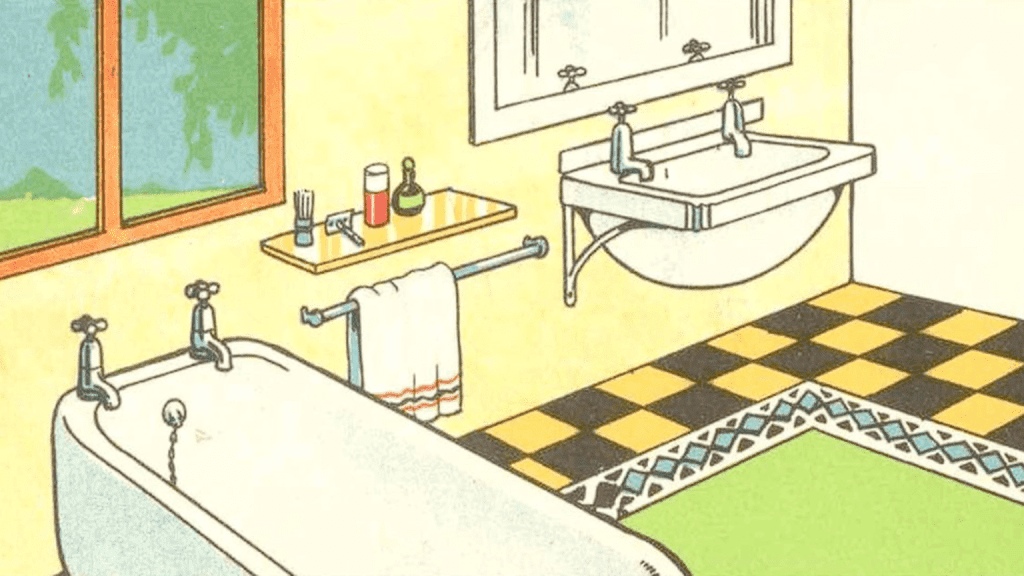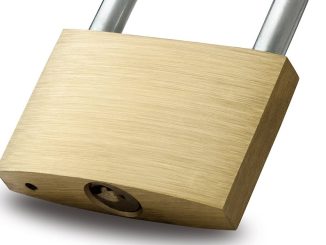There’s something undeniably fun about puzzles that make us stop and think, especially ones that test our attention to detail. Today, we’re diving into an intriguing visual puzzle that’s bound to challenge your observational skills. The task is simple: you’re looking at a seemingly ordinary bathroom, but there’s one small mistake hidden within it. Think you can spot it right away? Be careful—this puzzle is trickier than it seems.
Let’s go through each element step-by-step to see if we can identify the only error in this bathroom.
Common Pitfalls in Visual Puzzles

When tackling a puzzle like this, it’s easy to jump to conclusions or make assumptions based on what you expect to see. Many people rely on everyday associations, noticing details that seem out of place aesthetically rather than focusing on functionality. This often leads to focusing on minor details that aren’t actually mistakes. But in this case, it’s crucial to think practically and examine the bathroom’s functionality, not just its appearance.
Our brains often gloss over essential elements when we’re too accustomed to certain settings, like a bathroom. This can lead us to overlook something as crucial as the key component missing here.
Breaking Down the Puzzle: Step-by-Step Analysis
Let’s examine each section of the bathroom carefully to determine what’s missing.
Step 1: The Bathtub and Sink
First, let’s take a closer look at the bathtub and sink—two essential fixtures in any bathroom. At first glance, they seem ordinary, with the typical setup of a faucet and handles. There’s nothing out of place in terms of arrangement or design. So far, these components don’t appear to hold the answer to our puzzle. But keep them in mind as we move on.
Step 2: Floor Pattern and Décor
Now, shift your focus to the bathroom floor and overall décor. The floor is decorated with a checkered pattern, which looks perfectly standard. While the design might catch your eye, there’s nothing functionally wrong with it. Sometimes, puzzles like this one throw in visually interesting elements to draw attention away from the actual mistake, but there’s no issue here in terms of the floor or décor.
Step 3: Wall Fixtures and Mirror
Moving up, we see the towel rack, a mirror, and a shelf holding a few toiletries. These are all typical features you’d expect in a bathroom. The items on the shelf—a toothbrush, a cup, and a few toiletries—are exactly where you’d expect to find them, and there’s nothing obviously amiss. A quick glance at these wall fixtures doesn’t reveal any clues pointing to a mistake.
Step 4: The Window
Some might assume the puzzle’s answer lies in the window, perhaps finding it strange that it’s fully exposed. However, having an uncovered window in a bathroom isn’t necessarily a mistake. Many bathrooms do have open windows, especially if they’re designed to let in natural light or if privacy isn’t a concern. This doesn’t seem to be where our hidden error lies.
Step 5: Plumbing Details
Here’s where we need to take a closer look. Bathrooms rely on plumbing for proper functionality, and this is where the puzzle’s answer becomes clear. The critical mistake in this bathroom setup is that there’s no drainage pipe beneath the sink.
In a real bathroom, the sink would have a pipe that allows water to drain. Without it, water from the sink would have nowhere to go, which is a fundamental problem for a functional bathroom. This detail is subtle, but it’s essential. Many people overlook this because it’s a feature we rarely focus on—we’re used to seeing drainage pipes as standard, so they often blend into the background.
The Answer: No Drainage Pipe Under the Sink

The hidden mistake in this bathroom is the absence of a drainage pipe under the sink. Without it, water from the sink has no way to exit, making it impossible to use the sink effectively. This tiny but crucial detail is easy to miss because our brains tend to overlook functional details that we assume will be there.
In visual puzzles like this, focusing on practical aspects rather than purely decorative details can lead us to the answer. Missing the drainage pipe might seem like a minor detail, but it’s actually a big deal in a real bathroom setting. This small but critical element holds the key to solving the puzzle.
Why Small Details Make a Big Difference
This puzzle is an excellent example of why paying attention to functional details is so important. Often, we’re drawn to things that are visually obvious or out of place, which can mislead us. In this case, noticing the lack of a drainage pipe required us to look beyond aesthetics and consider how the bathroom would actually work.
Whether in puzzles or in life, practical details are often the most significant. By training ourselves to look beyond the surface and think critically, we can improve our problem-solving skills and avoid making assumptions. This bathroom puzzle encourages us to look closer, question what’s essential, and focus on the real function behind what we see.
Did You Spot the Mistake? Share Your Experience!
Did you manage to find the missing drainage pipe, or did the puzzle catch you by surprise? Share your answer in the comments below and let us know how you approached the puzzle! Did you get distracted by other details? How long did it take you to find the answer?
This puzzle is a great example of how our brains sometimes trick us into overlooking functional elements. Tell us if you were thrown off by any of the other details and whether you learned something new about observing subtle clues.
Continue to Challenge Your Mind
If you enjoyed this puzzle, why not try more like it? Puzzles that make us question our assumptions and look deeper are excellent for sharpening our observational skills. Each one challenges us to see things from a fresh perspective, helping us improve our ability to find solutions in unexpected places.
So keep challenging yourself with brain-teasers, riddles, and logic puzzles. The more you practice, the sharper your mind becomes at spotting those subtle details that others might miss. Remember, the key to solving puzzles like this one is to think practically and look beyond the obvious. Who knows? The next puzzle you try might just reveal a whole new way of seeing the world!


